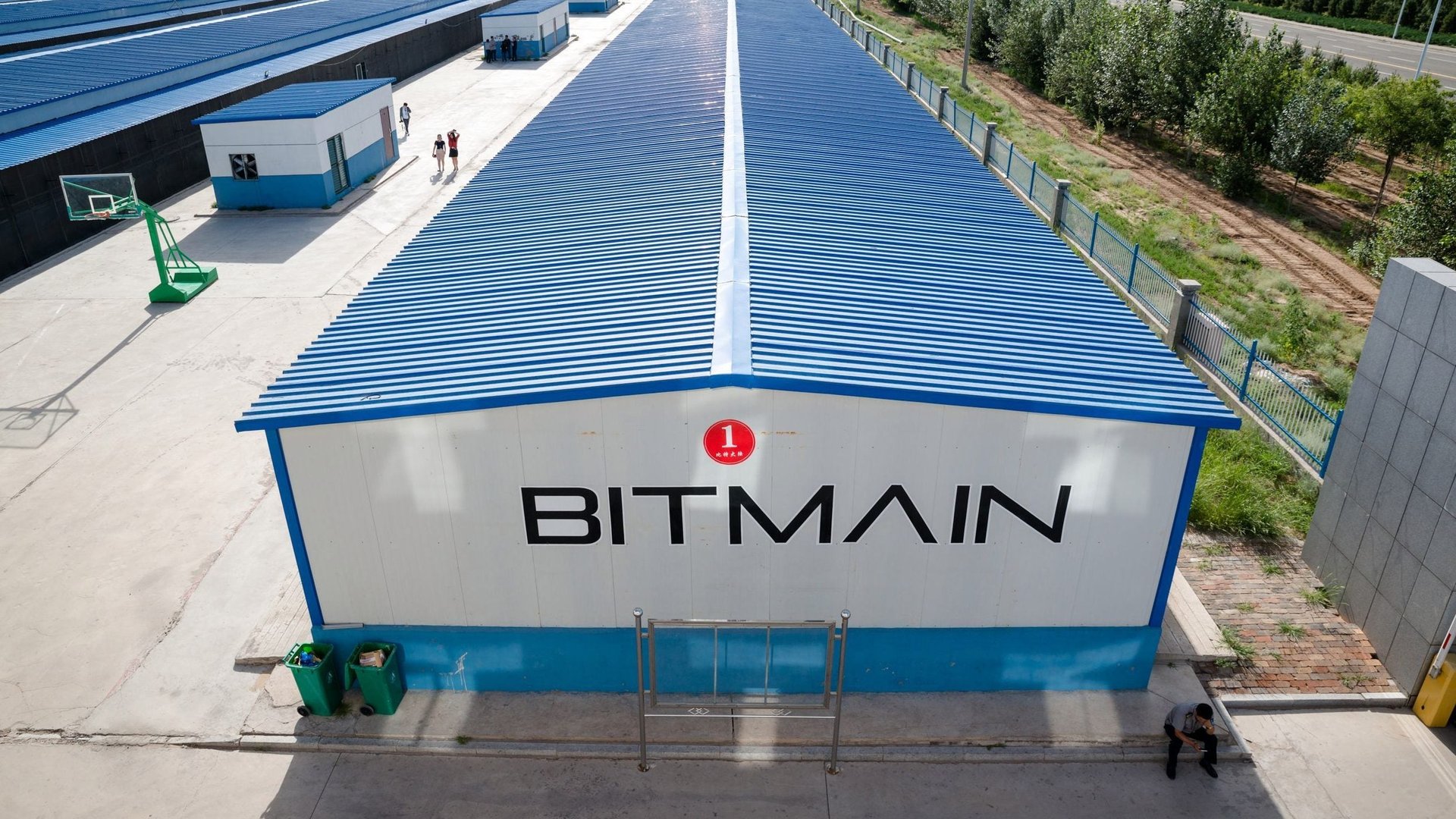One of the world’s largest crypto companies is hedging against the crypto market
All the ups and downs of cryptocurrencies can make anyone—even the most bullish of crypto believers—reconsider putting all their eggs in one basket.


All the ups and downs of cryptocurrencies can make anyone—even the most bullish of crypto believers—reconsider putting all their eggs in one basket.
That seems to be the thinking of one of the world’s largest crypto companies, Beijing-based Bitmain Technologies, which filed for an IPO in Hong Kong on Sept. 26. Aspirations to go public have forced the secretive company to open up its books, revealing how its business has changed over the last three years.
One takeaway from its numbers is that even as overall profit has risen, an increasingly smaller share of its revenue has come from mining cryptocurrencies for itself. Overall, it appears Bitmain has chosen to diversify its portfolio to capitalize on the growing interest in cryptocurrencies and offset the impact of regulations at home—while shielding it from some of the market shocks.
De-emphasizing mining crypto for itself
In 2015, a subsidiary of Bitmain took over a massive bitcoin mine in Inner Mongolia to try its hand digging for digital gold. When Quartz visited this mine in 2017, the decaying industrial park had employed about 50 people maintaining 25,000 machines that cost $39,000 in electricity to run each day.
The year it took over the mine, 20% of Bitmain’s total revenue came from proprietary mining, according to its filing, but that percentage shrank to 8% in 2017. That said, both Bitmain’s overall revenue and the value of cryptocurrencies, including bitcoin, have ballooned over this time. Last year, the company reported $199 million in revenue from proprietary mining, far above $28 million in 2015.
The vast majority of Bitmain’s revenue (pdf, p.3) has always been from the sale of mining hardware—it now has a market share of 75%, according to its prospectus—and this side of the business has continued to grow. In the first half of 2018, hardware sales, at $2.68 billion, comprised 94% of overall revenue, compared with 79%, or $107.9 million, for the full year of 2015.
Helping others mine
Two other smaller sources of Bitmain’s revenue come from operating mining pools, where miners contribute their power to jointly mine cryptocurrencies and share the rewards, and mining farms, where Bitmain helps customers manage their hardware.
Bitmain has 11 mining farms (pdf, p.159) in the Chinese provinces of Sichuan, Xinjiang, and Inner Mongolia, owning the land rights for around 120,000 sq m (1.3 million sq ft). Bitmain has also leased at least 50 properties (p.174) with an aggregate of about 99,700 sq m (1.1 million sq ft) of space that’s used for operations, though it didn’t specify what kind.
Building mining farms overseas
Bitmain is increasingly looking overseas to grow its revenue. In 2017 (p.168), Asia, excluding China, contributed 43% of its overseas mining-hardware revenue, followed by North America (35.7%), and Europe (20.7%).
Although it hasn’t opened any overseas farms yet, Bitmain is looking to do so in places where electricity is cheap. It’s already started construction on mining farms in Washington DC, Texas, and Tennessee, and expects the sites to start mining in the first quarter (pdf, p.159) next year. The firm said it’s also “contemplating” mining farms in Quebec in Canada where “cheap hydropower is available.”
Looking beyond crypto
Since 2015, Bitmain has made about 30 acquisitions (p.86), not all of them in the crypto industry. It spent $50 million in a 3% stake in Opera, a Norwegian company that makes a browser of the same name, and paid $1 million for 0.77% of Channel Factory, a US video-advertising company.